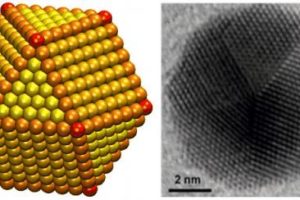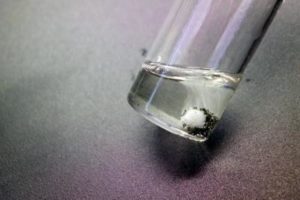journal of the american chemical society
Nanonets give rust a boost as agent in water splitting’s hydrogen harvest
CHESTNUT HILL, MA (2/9/2011) — Coating a lattice of tiny wires called Nanonets with iron oxide — known more commonly as rust — creates an economical and efficient platform for the process of water splitting, an emerging clean fuel scienc…
Scientists synthesize long-sought-after anticancer agent
New Haven, Conn. — A team of Yale University scientists has synthesized for the first time a chemical compound called lomaiviticin aglycon, leading to the development of a new class of molecules that appear to target and destroy cancer stem cells. …
Stretching the truth: JILA biophysicists help unravel DNA stretching mystery
Using a new experimental test structure, biophysicists at JILA have unraveled part of a 15-year mystery in the mechanics of DNA — just how the molecule manages to suddenly extend to almost twice its normal length. The new test structure should supp…
New method takes snapshots of proteins as they fold
People have only 20,000 to 30,000 genes (the number is hotly contested), but they use those genes to make more than 2 million proteins. It’s the protein molecules that domost of the work in the human cell. After all, the word protein comes fro…
Listen up — U-M experiment records ultrafast chemical reaction with vibrational echoes
ANN ARBOR, Mich.—To watch a magician transform a vase of flowers into a rabbit, it’s best to have a front-row seat. Likewise, for chemical transformations in solution, the best view belongs to the molecular spectators closest to the action.
…
New infrared light may open new frontier in fighting cancer, Tay Sachs
A “game-changing” technique using near infrared light enables scientists to look deeper into the guts of cells, potentially opening up a new frontier in the fights against cancer and many other diseases.
University of Central Florida chemists, led…
Why fish don’t freeze in the Arctic Ocean
Together with cooperation partners from the U.S., the researchers surrounding Prof. Dr. Martina Havenith (Physical Chemistry II of the RUB) describe their discovery in a so-termed Rapid Communication in the prestigious American chemistry journ…
Blood test could detect heart attack early
Researchers in Canada are developing a new blood test that they say shows promise of becoming a quicker and more accurate method for diagnosing whether patients with chest pain are having a heart attack. The test could save lives by allowing quicker intervention to prevent more advanced heart damage and could improve the quality of life for heart attack survivors, they say. In preliminary lab studies, the test produced results in just five minutes and had a 99 percent accuracy rate, according to the researchers.



